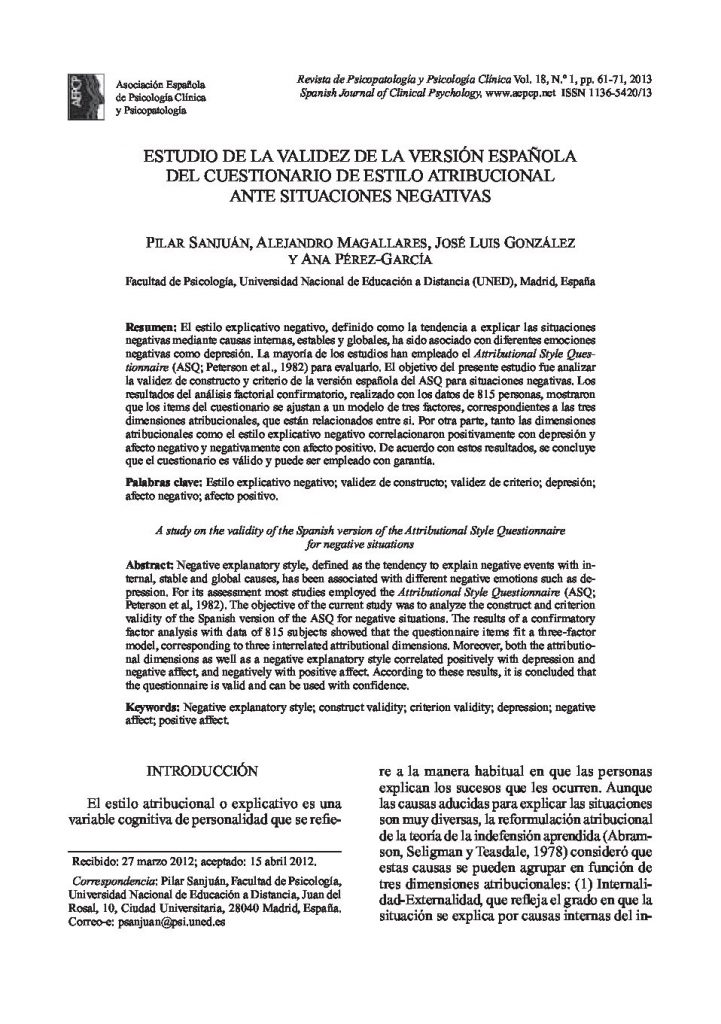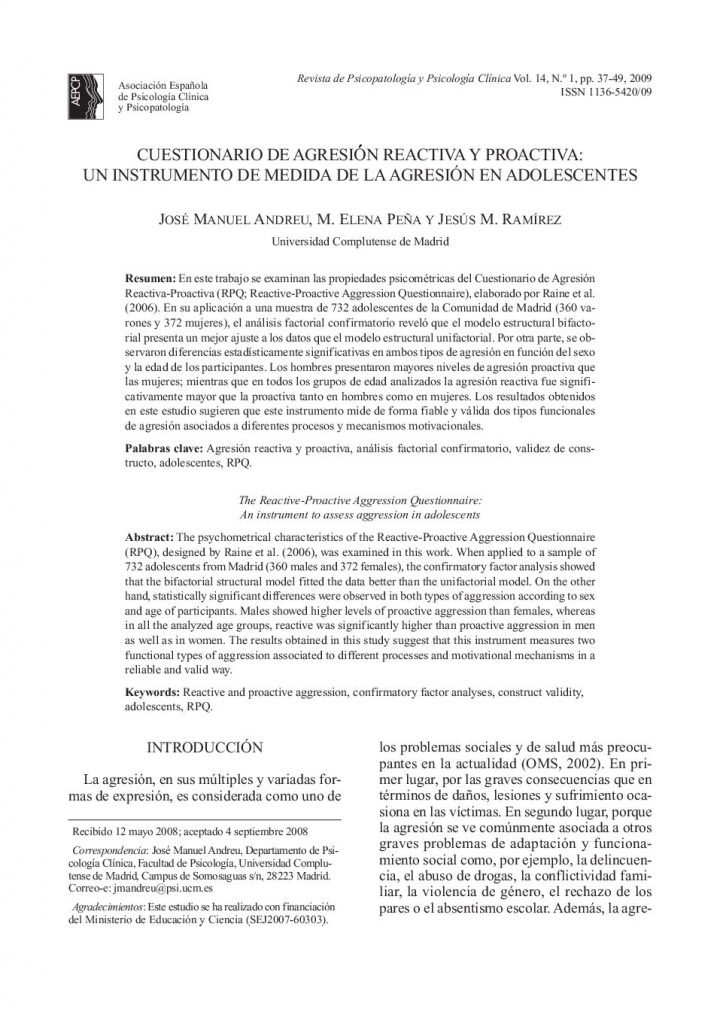Estudio de la validez de la versión española del Cuestionario de Estilo Atribucional ante Situaciones Negativas.

- Construcción y validación preliminar de la Escala Multidimensional de Sensibilidad al Asco (EMA).
- Dimensiones de sensibilidad al asco y predicción diferencial de los síntomas fóbicos.
- Conformidad con roles femeninos y conductas alimentarias inadecuadas en estudiantes de danza.
- Estudio de la validez de la versión española del Cuestionario de Estilo Atribucional ante Situaciones Negativas.
- Valoración de la imagen corporal y de los comportamientos alimentarios en universitarios.
- La falta de empatía: ¿Un síntoma específico de la esquizofrenia?.
- Subescala OCS-CBCL de Nelson para la evaluación del trastorno obsesivo-compulsivo infanto-juvenil: Análisis de validez en una muestra española.
Negative explanatory style, defined as the tendency to explain negative events with internal, stable and global causes, has been associated with different negative emotions such as depression. For its assessment most studies employed the Attributional Style Questionnaire (ASQ; Peterson et al, 1982). The objective of the current study was to analyze the construct and criterion validity of the Spanish version of the ASQ for negative situations. The results of a confirmatory factor analysis with data of 815 subjects showed that the questionnaire items fit a three-factor model, corresponding to three interrelated attributional dimensions. Moreover, both the attributional dimensions as well as a negative explanatory style correlated positively with depression and negative affect, and negatively with positive affect. According to these results, it is concluded that the questionnaire is valid and can be used with confidence.
El estilo explicativo negativo, definido como la tendencia a explicar las situaciones negativas mediante causas internas, estables y globales, ha sido asociado con diferentes emociones negativas como depresión. La mayoría de los estudios han empleado el Attributional Style Questionnaire (ASQ; Peterson, et al.,1982) para evaluarlo. El objetivo del presente estudio fue analizar la validez de constructo y criterio de la versión española del ASQ para situaciones negativas. Los resultados del análisis factorial confirmatorio, realizado con los datos de 815 personas, mostraron que los ítems del cuestionario se ajustan a un modelo de tres factores, correspondientes a las tres dimensiones atribucionales, que están relacionados entre sí. Por otra parte, tanto las dimensiones atribucionales como el estilo explicativo negativo correlacionaron positivamente con depresión y afecto negativo y negativamente con afecto positivo. De acuerdo con estos resultados, se concluye que el cuestionario es válido y puede ser empleado con garantía.




